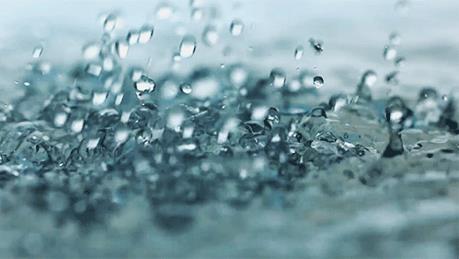Holy Water
It’s most of the stuff of what we’re made of (we’re 70 per cent water; plants 90 per cent), there’s a hundred times more molecules of water inside us than all the other molecules put together, it covers three quarters of the planet, and life on Earth is impossible without it.
But we’re no closer to understanding exactly how water behaves. In fact, water drives most scientists crazy.
Water is a chemical anarchist, behaving like no other liquid in nature, displaying no less than 72 weird properties – and those are just what we’ve discovered thus far.
It’s is a compound formed from two gases, yet it’s liquid at normal temperatures and pressures. It is the lightest of gases, but far denser as a liquid and lighter as a solid.

Hot water behaves far differently than cold water; when water is heated, the molecules expand and it’s easy to compress, but when cooled they move more slowly, they shrink and they get harder to compress. Hot water freezes faster than cold water does; ice density increases as you heat it up, but shrinks on melting. Water has an unusually high melting point and boiling point. The list goes dizzyingly on.
Attempts to model water as the seemingly simple substance it is continue to fail. You could spend your entire career – and many scientists do – playing around with water and feel like you’re getting nowhere.
And now we’ve learned that water does two other special things that could change everything we think about how the world works: it stores information and also broadcasts it.
Nature’s taperecorder
Two Italian physicists at the Milan National Institute of Nuclear Research, the late Giuliano Preparata and his colleague the late Emilio Del Giudice, demonstrated mathematically that, when closely packed together, atoms and molecules exhibit collective behaviors and form what they termed 'coherent domains,’ much as a laser does.
Light is normally composed of photons of many different wavelengths, like colors in a rainbow, but photons in a laser have a high degree of ‘coherence’, acting rather like a giant single wave of one brilliantly intense color.
As other scientists went on to investigate, water molecules appear to become 'informed' in the presence of other molecules—that is, they tend to polarize around any charged molecule—storing and carrying its frequency so it can be read at a distance.
This suggests that water can act like a tape recorder, retaining and carrying information whether the original molecule is still there or not.
This means that water not only sends the signal but also amplifies it.
Broadcasting information
Recently Nobel laureate French virologist Luc Montagnier discovered that water also ‘broadcasts’ information. His team carried out a ingenious series of experiments involving two test tubes, one containing a tiny piece of DNA from a sample of bacteria highly diluted in water and the other containing only water, and both surrounded by a weak 7Hz electromagnetic field.
When they checked the second test tube eighteen hours later, it too had evidence of the DNA in the first test tube as though information had been ‘beamed’ from the first and teleported to the second.
It had also occurred over many hours, and not seconds and in an ordinary room temperature, not temperatures approaching absolute zero that are usually required with a quantum process.
Interestingly the first sample of water had to be diluted many times, as occurs with homeopathy, in order for the experiment to work.
The scientific community did not know what to make of Montagnier’s little experiment and many dismissed it, claiming the great co-discoverer of the AIDS virus had gone off the rails.
Nonetheless, his little experiment carries huge implications, and not just that a big visible substance like water operates according to quantum effects.
The late Rustum Roy, a professor of Penn State University, once argued that these kinds of properties ‘definitely demolish the objection against homeopathy, when such is based on the wholly incorrect claim that since there is no difference in composition between a remedy and the pure water used, there can be no differences at all between them.”
Or, as Montagnier said: ‘High dilutions of something are not nothing. They are water structures which mimic the original molecules.”
If he and his colleagues are correct, the fact that water can serve as an information highway for all living things is extraordinarily significant when you consider that water is the basic component of life.
Think of the implications. Can we imprint information into the water we drink to affect ourselves? Is water, in effect, tape-recording our thoughts? When someone holds a focused thought, is he altering the water in the cells of the object of his intention?
Re-posted from www.lynnemctaggart.com, Oct. 9, 2015


